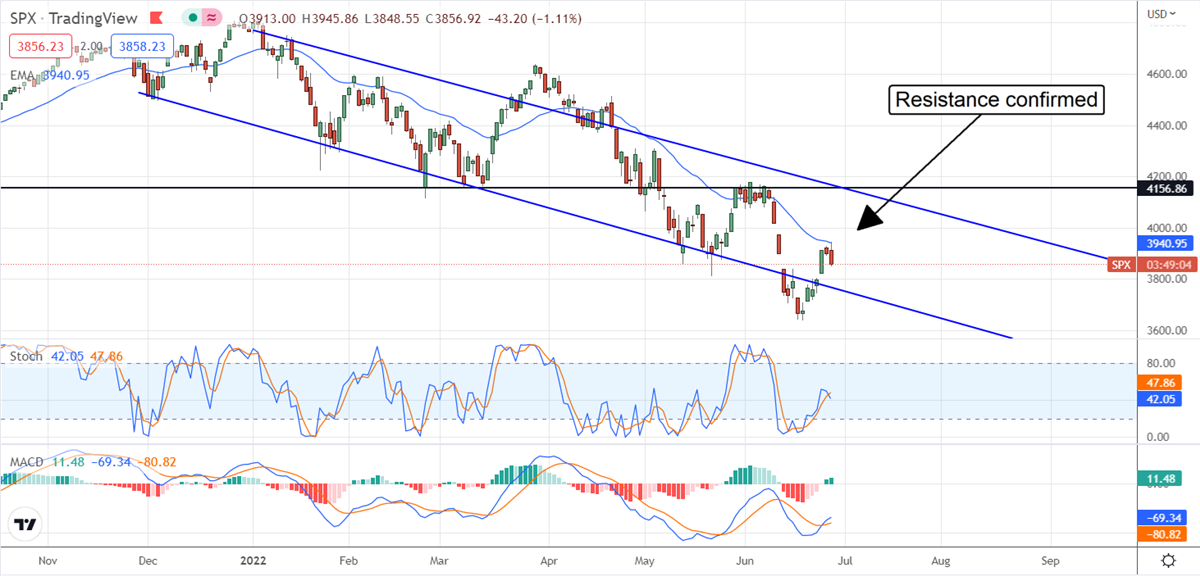Goldman Sachs Says 2023 Outlook Too Optimistic
Goldman Sachs analysts Ben Snyder issued a letter to investors echoing a sentiment we share. In his note, he says the 2023 outlook for S&P 500 (NYSEARCA: SPY) earnings is too optimistic given the headwinds facing the economy. Even discounting the possibility of a recession, Mr. Snyder says the analyst’s consensus for margins is usually too high and that is the best-case scenario in our opinion. The worst-case scenario is that margins will not improve appreciably across the broad market and earnings growth will be very tepid in 2023 if present at all. The takeaway is the analyst will most likely begin lowering their estimates for next year and that will add downward pressure to the stock market.
 MarketBeat.com – MarketBeat
MarketBeat.com – MarketBeat “Looking forward, analyst estimates show S&P 500 profit margins climbing to new highs in 2023,” Snider said. “Despite tightening financial conditions, persistent input cost pressures, and slowing revenue growth, analysts continue to forecast a rise in profit margins next year.”
The question is when will they begin lower those expectations and we think it may be soon. The outlook for earnings, in general, is very cloudy this year and that has led to an interesting trend. The consensus estimates for the Q1 and Q2 periods of 2022 held steady right up until the end of the preceding quarter, held there by hope, and then they fell under the weight of reality. If this trend continues, we expect to see the outlook for Q3 earnings begin to crumble over the next month and Q4 may fall with it. The expectation for the second half is for significant supply chain improvement and price stability, what we’re looking at right now are ongoing supply chain issues and wildly out-of-control inflation.
Cathie Woods Says We’re Already In A Recession, Duh
Cathie Wood echoed another sentiment we’ve developed over the past two months and that is we’re already in a recession. In her view, the rapid increase in inventories this year, among other efforts to mitigate supply chain issues, has the market set up for a deflationary period and she may be right. What this means is a new age of discounting, tightening margins, and ultimately a contraction in GDP as retailers and wholesalers work to reduce inventory bloat.
Based on the data, we are already in a technical recession and are only waiting on the 2nd quarter GDP read to confirm it. The latest Leading Indicators came in at a new low of -0.4% and included a downward revision to previous data which suggests to us the 2nd quarter GDP will be worse than the 1st quarter. In this scenario, a soft landing looks highly unlikely and there is an important data point due out this week. The PCE price index is due out on Thursday and will confirm the need for aggressive FOMC action, the only question is how aggressive? As it is now, the FOMC is expected to hike rates by 75 basis points at each of the next two meetings.
The Technical Outlook For The S&P 500 Is Unchanged
The S&P 500 bounced from the 3,650 level in what began as a strong move but the bear market rally is already lower. The index has found resistance at the short-term moving average and coincident with the mid-point of a downtrending channel. In our view, this is a significantly bearish development that has the index set up to retest the recent lows if not set new ones. A move below 3,650 will open the door to our next target at the 3,400 level and potentially to a full retracement of the COVID-19-induced rally in stocks. 






